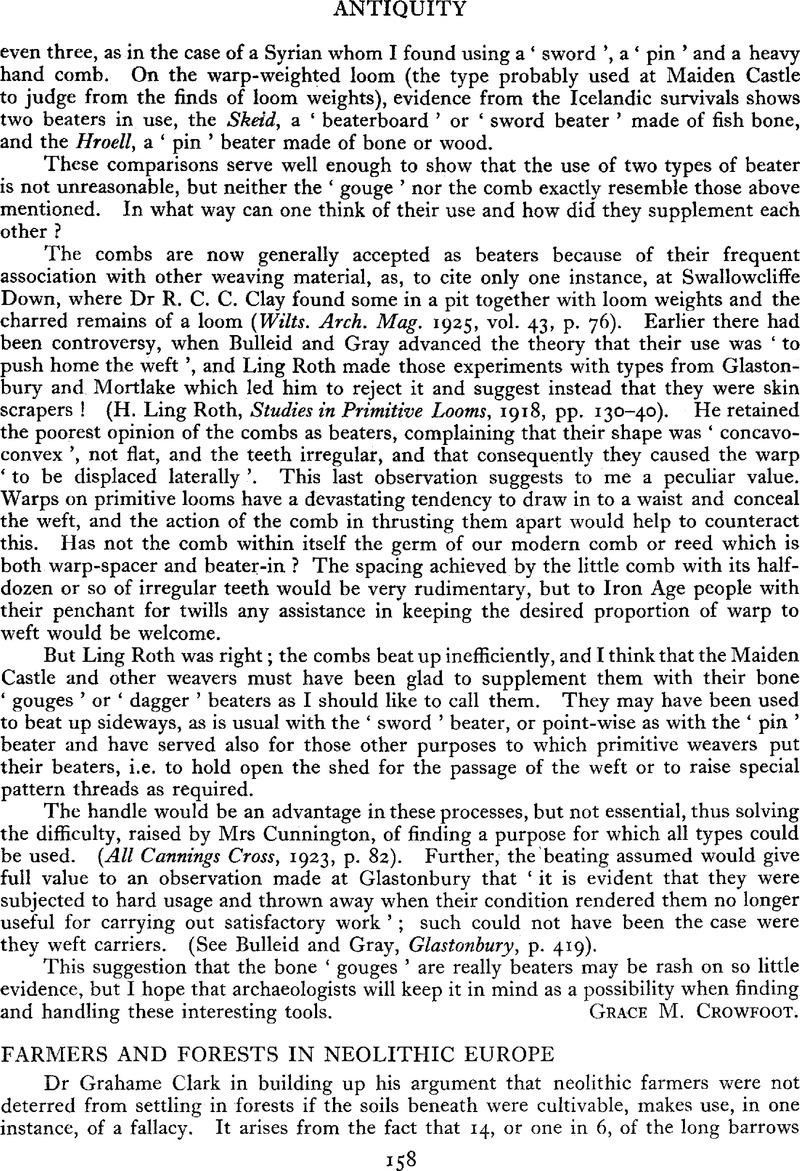No CrossRef data available.
Published online by Cambridge University Press: 02 January 2015

1 At least 11 of the 14 long-barrows of the ‘Cotswold region’ that are today in woods or spinneys, command, or would command if the woods were cleared, wide views. Two others of these 14 are near the Welsh border, and their sites are not typical of those in the Cotswold limestone country.
2 This is especially applicable to forest growth on expcsed oolitic uplands where the shallowness of the soils prevents deep root development, and renders trees peculiarly liable to be uprooted during gales. Even in the lower, more wooded parts of the eastern Cotswolds, the great gales of November 1928 and January 1930 cprooted so many trees that the timber could not be sold at economic prices for several years.